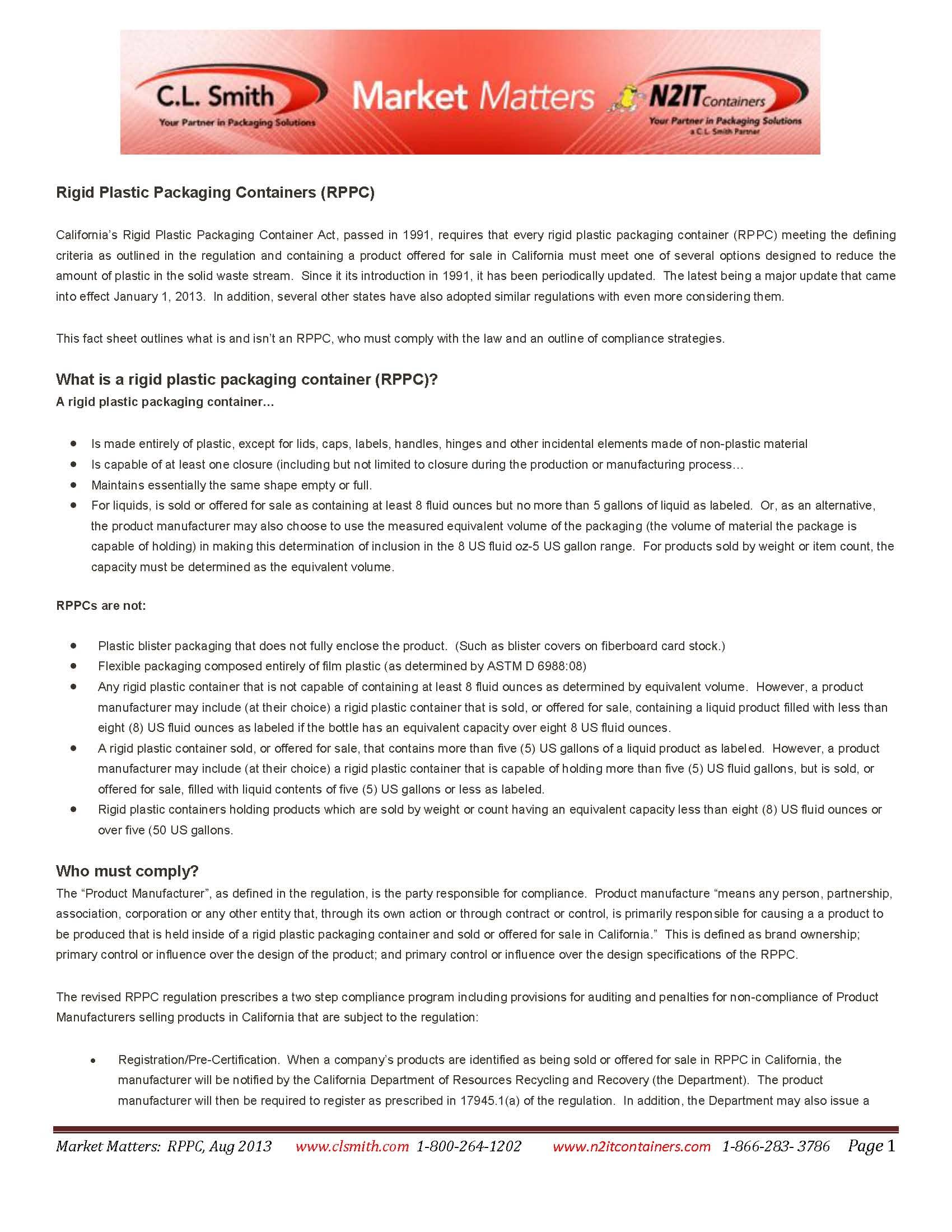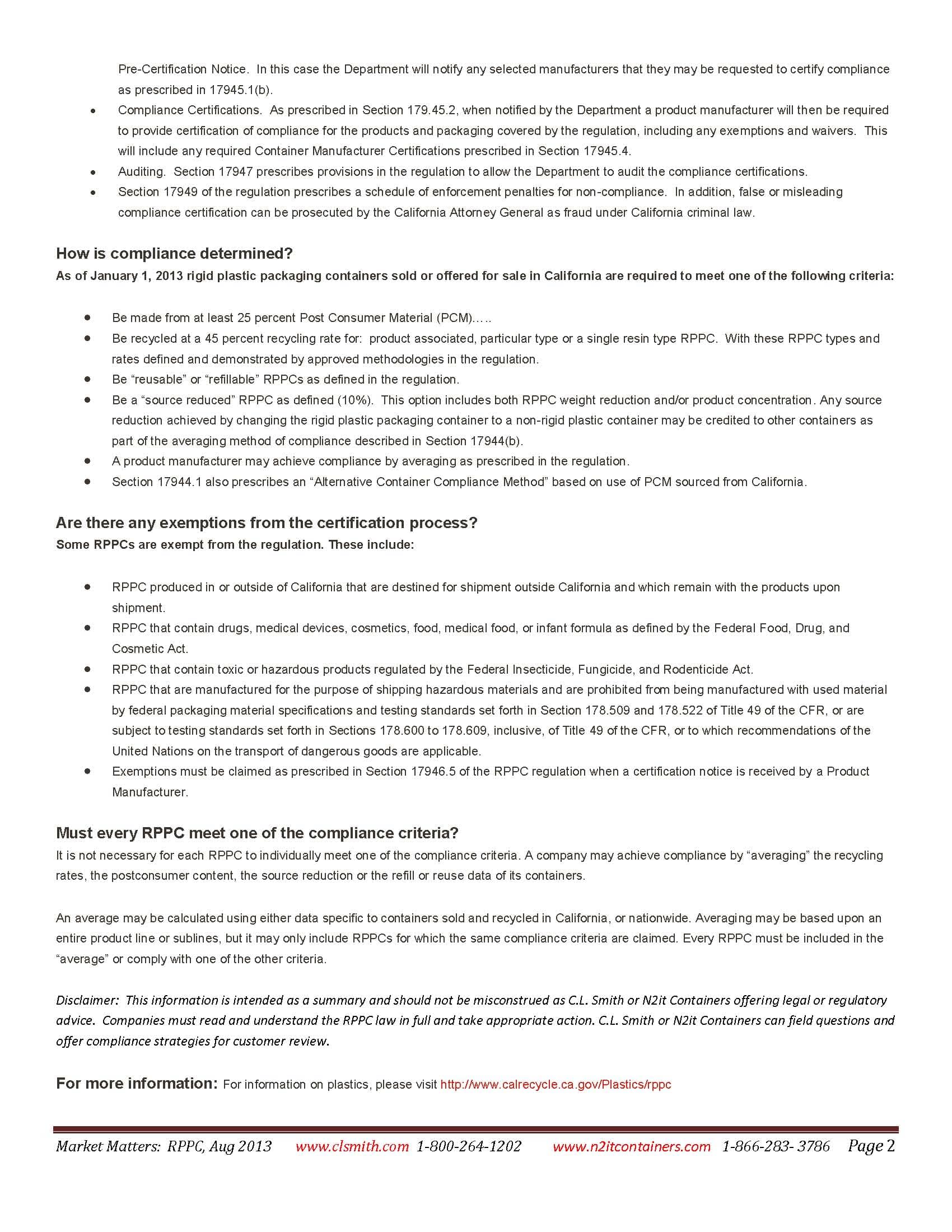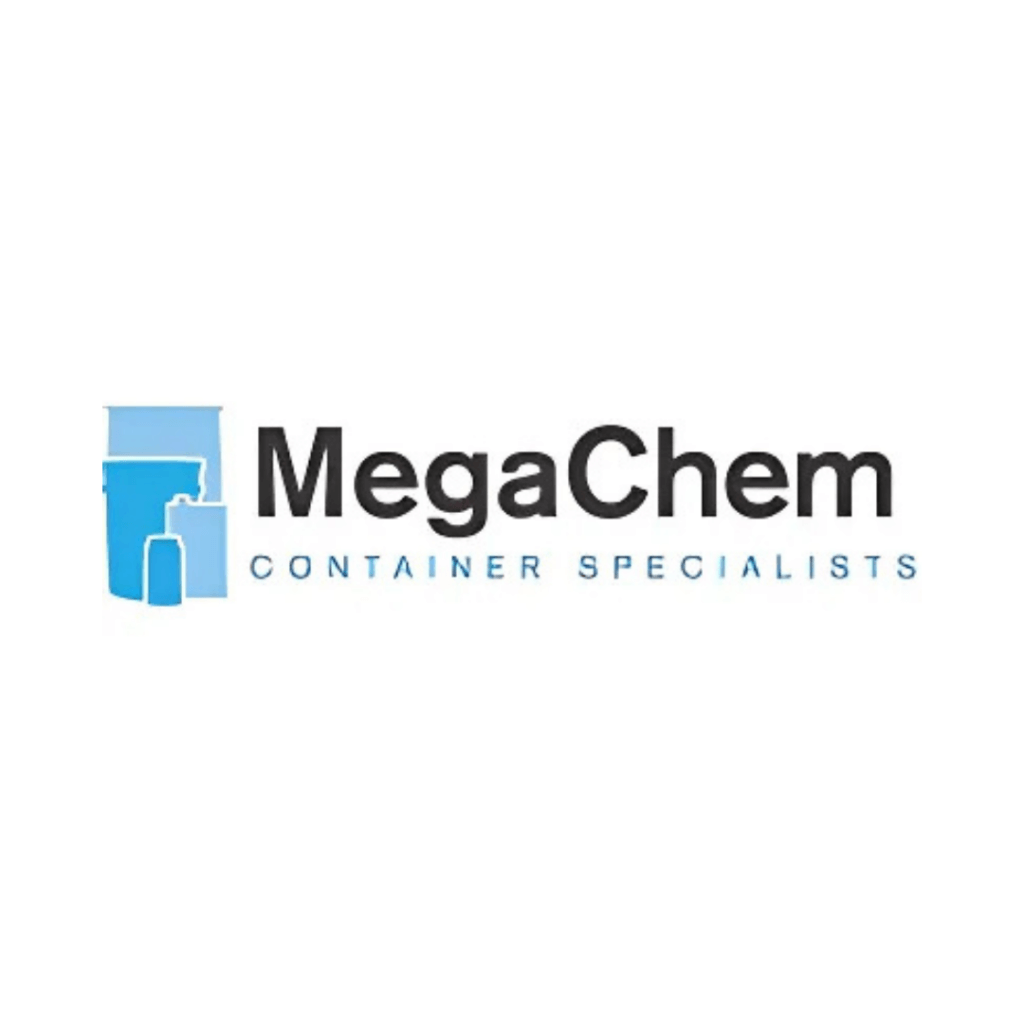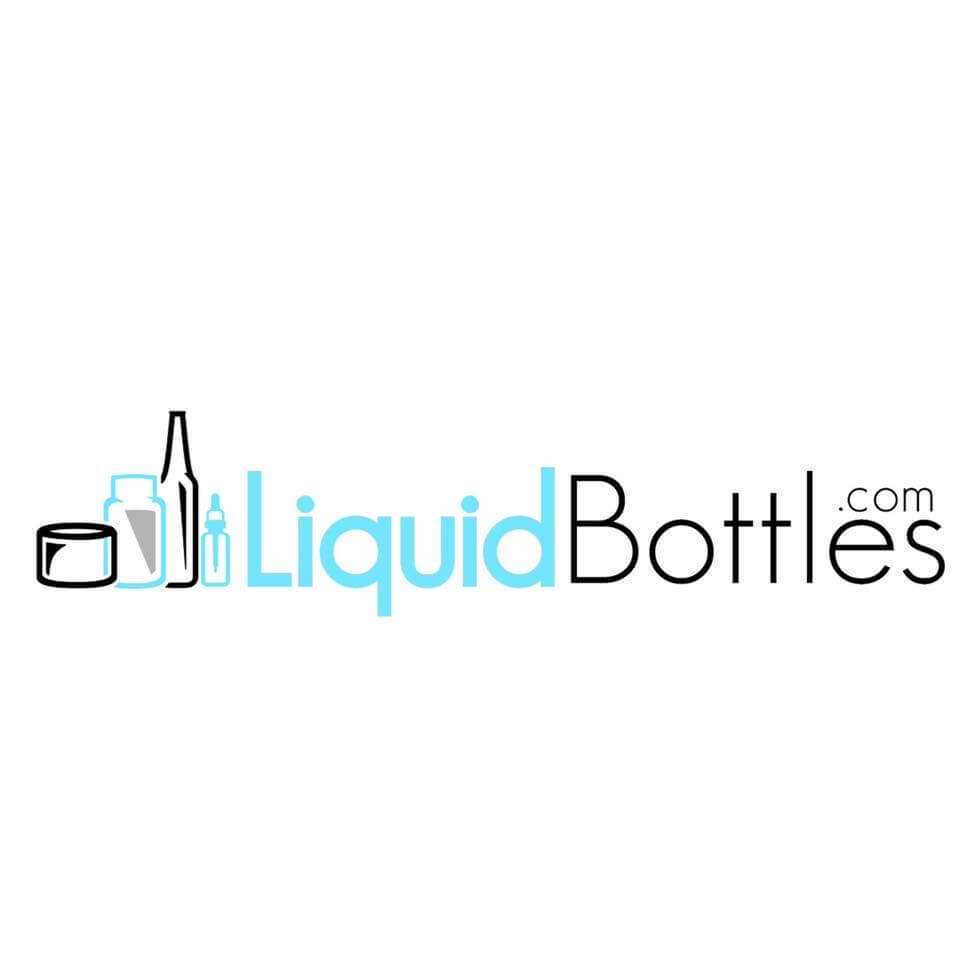California’s Rigid Plastic Packaging Container (RPPC) Law:
Effective Date: January 1st, 2013
California RPPC Regulation: What has changed?
Significant changes in the revised California RPPC regulation may have profound effects on current compliance programs. While it is important to fully understand any regulation that affects our business operations, it is helpful to see an outline of the most relevant differences after an extensive modification to a particular regulation that changes the common and long time understanding. To that end, below is a series of “What has changed?” to the RPPC regulation that most affect our customers, who are usually “Product Manufacturers” under the California RPPC regulation.
Definitions:
Rigid Plastic Packaging Container: Several modifications in the definition of an RPPC now includes packaging that was exempt from the regulation in the past.
- Packagings that have metal handles, hinges, lids or covers are subject to the RPPC regulation because they now are included in the definition of a RPPC. Many pails with wire bails, boxes with metal hinges or closures would now need to be included in the program.
- A packaging need not be capable of multiple closures to be included in the revised regulation. Only a single closure is now required to include the packaging in the definition, and this would include closure at the time of package assembly with its contents. This would now include packagings like clamshells, plastic tubes without re-closable caps that were excluded from the definition of a RPPC under the previous definition.
- Packagings which are rigid under the definition (when containing their product) except that they fold up or collapse when not holding product are now defined as being RPPC (hence regulated) under the revised definition.
- Blister packaging with fiberboard backs are still not included in the definition of a RPPC, because they are not a closed all plastic container. But, clamshell type packagings (plastic on all sides of the product) are now included in the regulation as an RPPC, even when sonically welded closed for a single use.
Source Reduced Container:
- The definition has been changed to NOT include packagings where the required ten percent basis weight reductions are achieved by a change in resins. Such as a sixteen ounce HDPE bottle being replaced by a sixteen ounce PETG bottle. The basis weight reduction must be achieved with the same material, or another compliance option must used.
- Product concentration in the same container is considered “source reduced”, if the number of product uses per container is increased by at least 10%.
- If the weight of the container has been increased since January 1, 1991; any subsequent reduction would not be considered source reduced.
- Any change in the container that adversely affects its ability to be recycled would not be eligible for inclusion under this compliance option.Product Manufacturer is now defined as the entity who:
- Owns the brand
- Has primary control over the design of the product
- Has primary control over the design of the container
Sold or Offered for Sale:
- This definition includes direct sales, retail sales, sales through distribution or wholesaler and now includes internet sales.
Container Requirements:
There has been an expansion and clarification in the compliance strategies for the packaging programs of product manufacturers. It needs to be noted that the twenty-five percent Postconsumer Material (PCM) in containers is only one of several available compliance options. The most efficient and lowest cost compliance program may not include the PCM option, or include it only as a part of the larger program. The selection of the best mix of compliance options for particular Product Manufacturers may be very different and need to be determined on a case by case basis.
- The regulation allows for averaging across Product Lines and may be based on packaging sold nationwide or in the State of California. This is selected by the Product Manufacturer.
- Averaging is allowed for PCM use, source reduction, reuse provisions and refill provisions and can be used across the entire product line or on individual product sub-lines at the discretion of the Product Manufacturer.
- An Alternative Container Compliance Method has been added. This essentially allows for a company (or related companies) to use (consume) PCM generated in California for a variety of uses to be counted as meeting the requirements of the PCM percentages that would be required in the packagings subject to the regulation.
Disclaimer: This information is intended as a summary and should not be misconstrued as C.L. Smith offering legal or regulatory advice. Companies must read and understand the RPPC law in full and take appropriate action. C.L. Smith can field questions and offer compliance strategies for customer review.
For more information: For information on plastics, please visit http://www.calrecycle.ca.gov/Plastics/rppc
Comments are closed







